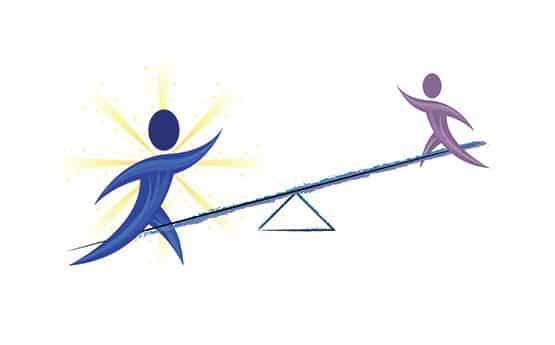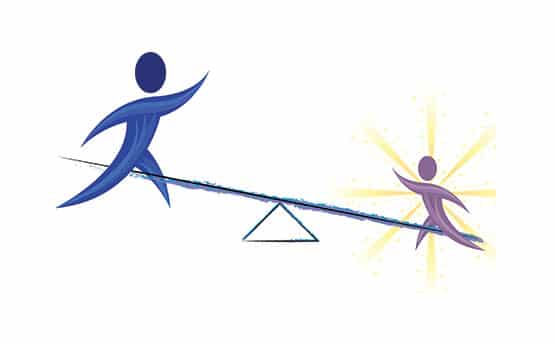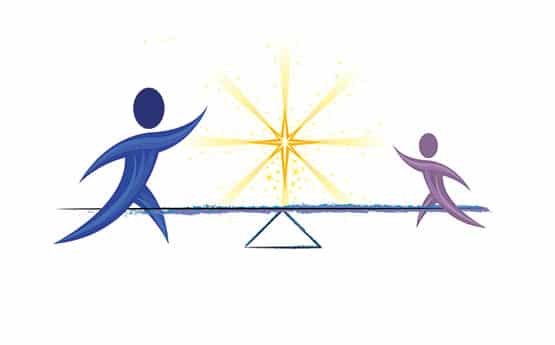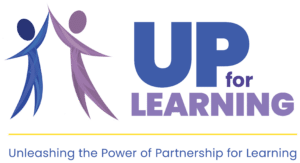The personalization of learning requires the relationship of students and teachers to shift to partnership and shared responsibility. Educational change in Vermont has also opened the door to unprecedented opportunities for young people to be central to change, rather than passive recipients. However, there are few roadmaps for shifting our mental models and practices to partnership.
This blog explores one dynamic that has repeatedly challenged forming authentic, equitable youth-adult partnerships in UP teams over the past 12 years. I share it with the hope that naming and exploring this potential pitfall will expedite the journey for others on the road to youth-adult partnership. In the subsequent blog I offer ways we have developed to circumvent this challenge.
The Teeter-Totter Effect Overview
The journey from an adult-dominated decision making model to a youth-adult partnership model requires a recalibration of norms, including mental models, power, communication, collaboration, decision making, and shared responsibility. As with any change in beliefs and practices, the recalibrating process can be anything but simple and linear! Below is one pattern that UP has observed repeatedly in a youth-adult team or schools journey to partnership, best explained through the teeter-totter metaphor.
Adult-dominated
In our dominant cultural norm, adults are grounded with the power and responsibility to shape most aspects of educational decisions, essentially doing education to and for youth. Youth are along for the ride in a largely passive role. Being suspended in air can feel delightfully unburdened or frustratingly out of control. The response of youth ranges from acceptance and comfort (e.g., playing the game of school), to anger and withdrawal (e.g., dropping out). Adults are firmly grounded in a comfortable and known role, often unaware that they are missing an invaluable perspective in their process of decision-making.

When the teeter-totter is in this position, the wisdom, knowledge, passion, commitment, and ownership of one of the major stakeholder groups in education – students – will be missing in the process of learning and school change.
Youth-dominated
When a culture begins to shift to youth-adult partnership, it seeks to rectify the
long-standing imbalance of power and omission of youth in decision-making. Adults step back to make space for youth voice and power, but can over-correct by largely removing their own voice and input. They now are passively along for the ride, believing that their role is to defer all responsibility and decision making to youth. They fear that any attempt to share their knowledge or opinions will demean the new partnership. Youth often feel joy in this new role of responsibility and sense of power, sometimes offset by uncertainty or confusion due to lack of supports and structure.
They can believe that the correction of the power imbalance requires this youth-only shift Рit is their turn! Adults appreciate witnessing the youth leadership and learning capacity, but feel helpless and frustrated when they have knowledge or insight into a situation where their input could help inform the learning or outcome.

When the teeter-totter swings to this position, the wisdom, knowledge, passion, commitment, and ownership of one of the major stakeholder groups in education – educators – will be missing in the process of learning and school change.
Youth-adult partnership
Youth-adult partnership in its authentic, equitable form allows both youth and adults to be firmly grounded in shared power and responsibility. Both generations readily share their wisdom, knowledge, passion, and commitment. Students and teachers know that they are invaluable partners with a relationship rooted in respect, trust, and equity. All feel the joy and weight of shared responsibility and continually build their capacity as change agents in their own lives and in shaping their school community. Both learning and school change efforts are orchestrated with youth in contrast to being done to and for them. Decision-making is flexible, with youth sometimes in the lead and at other times adults. A trusting and mutually respectful relationship makes this both comfortable and empowering.

Realizing the full potential of both stakeholder groups results in an unprecedented capacity to co-create an engaging and inclusive learning environment, seeding lifelong civic capacity.

